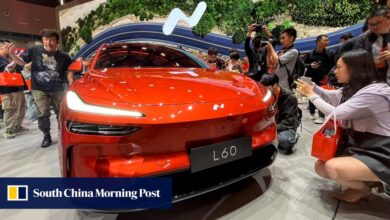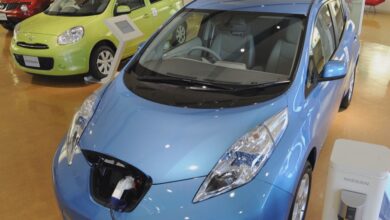Europe’s EV conundrum: more chargers, sustained market support, smarter policies – ACEA

Europe must do so much more to get its electric vehicle industry into the fast lane. This is even more urgent with European elections around the corner, in which some seem to read signs that the clock could be turned right back. On the contrary, we are way past the station of discussing the ‘if’. Instead, full emphasis should be put on the ‘how’: decarbonising transport and mobility in such a way that we actually achieve our shared societal goals, while striking a sustainable and realistic balance between economic, environmental, and geopolitical interests.
So, where do we stand?
The auto industry has committed to invest over €250 billion in electrification towards 2030 – more than the GDP of several member states combined. But the electromobility revolution means much more than just replacing one drivetrain technology for another, as deeply complex and transformative as this may be from an industrial perspective. It requires a team sport with many others playing ball, too. And this is where the going gets tough.
A recent ACEA report on the state of play of Europe’s public charging infrastructure for EVs revealed eye-opening findings. ACEA estimates the need for 8.8 million charging points by 2030. This means that around 1.2 million chargers must be installed each year to achieve the 2030 decarbonisation target – eight times what is currently installed (150,000) annually – and this in a blink of an eye in terms of infrastructure permitting approval and installation.
If the EU is serious about making EVs a practical reality for all Europeans within the next five years, the deployment of public charging points needs to dramatically pick up pace. Many countries, particularly in central and eastern Europe, are drastically underserved. Indeed, almost two-thirds of EU charging points are concentrated in just three member states covering about 20% of the EU’s surface area – the Netherlands, France, and Germany. The other third of all chargers is sparsely distributed across the other 24 EU members.
The challenge becomes even more acute in the business-to-business logistics sector which relies on seamless cross-border goods transport. For instance, operator investments in electric trucks for long-haul transport are massively discouraged by insufficient and inadequate charging networks.
Still, infrastructure is just one of the core ingredients in the recipe for a successful EV transition. Europe must also back up its ambition with the right incentives to encourage Europeans to make the switch to electric vehicles. A glance at the fastest EV forerunners provides a fleeting example of what can be achieved with a smart policy mix. A diverse array of tools, whether it’s tax credits, VAT reductions (including on electric charging), lower registration fees, cheaper parking and tolls, a diverse policy toolkit can reap substantial rewards for EV uptake.
The EV transition is also curtailed by a fragmented internal market when it comes to EV incentives. The competence for establishing incentives rests with each member state, exacerbating disparities across borders and making it harder to catch up with wealthier countries that can better afford the extra pressure on public budgets. While setting decarbonisation goals at the European level is unquestionably the right approach, a continent with 27-plus uncoordinated schemes for EVs will hamper the transition.
Last but certainly not least, infrastructure and incentives must be neatly synced with a broader holistic industrial strategy that European auto makers have been calling for – one that encompasses the entire EV lifecycle, from R&D all the way up to recycling. It is a fact that EVs cost more to produce in Europe than combustion engine models or EVs imported from regions with lower manufacturing costs. This means Europe’s policy framework must do a better job of promoting affordable manufacturing, such as driving down higher battery manufacturing and energy costs as well as securing access to critical raw materials to power the EV era.
EV affordability is undoubtedly a concern for auto makers and consumers alike. After all, the EV transition must also be inclusive and accessible to all Europeans, regardless of their age, financial means, or the region they live in. Coming soon, the next in our series of ‘Automotive Insights’ reports will tackle just this – the question of EV affordability.
In sum, Europe’s ambitious targets to slash road transport CO2 emissions are necessary to make the EV transition a reality. However, a successful EV transition equally requires widespread infrastructure, robust market demand support, and competitive, affordable manufacturing conditions in Europe to match the more unified strategies of the US and China, based on a smarter and better coordinated European policy framework. Lofty policy goals must be matched by equally bold actions for implementation.
With the ambition to rapidly slash car and van CO2 emissions, a massive transition to EVs is not a choice – it’s a must. That said, simply setting ambitious electrification targets without establishing equally ambitious conditions to implement them, is not a smart strategy.



